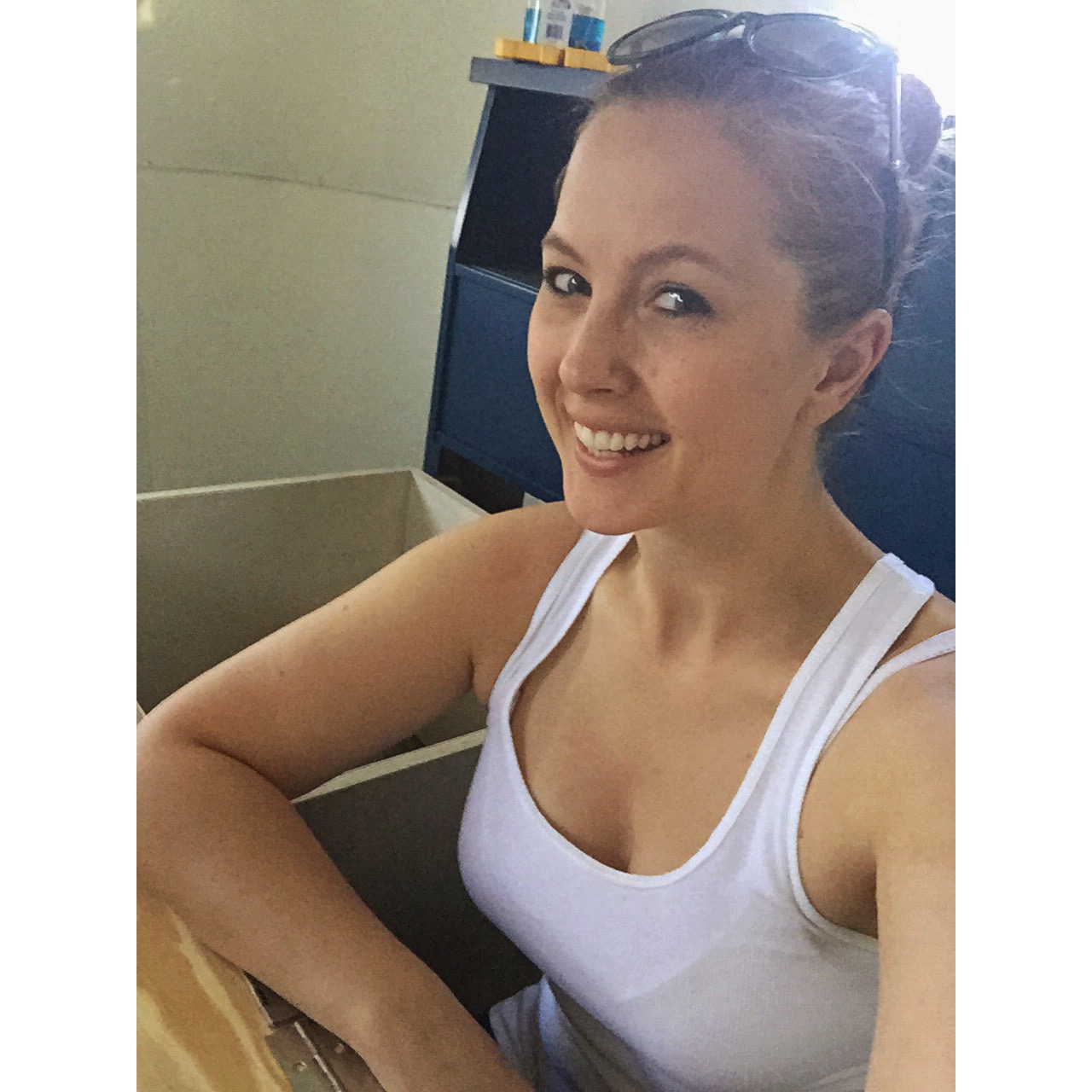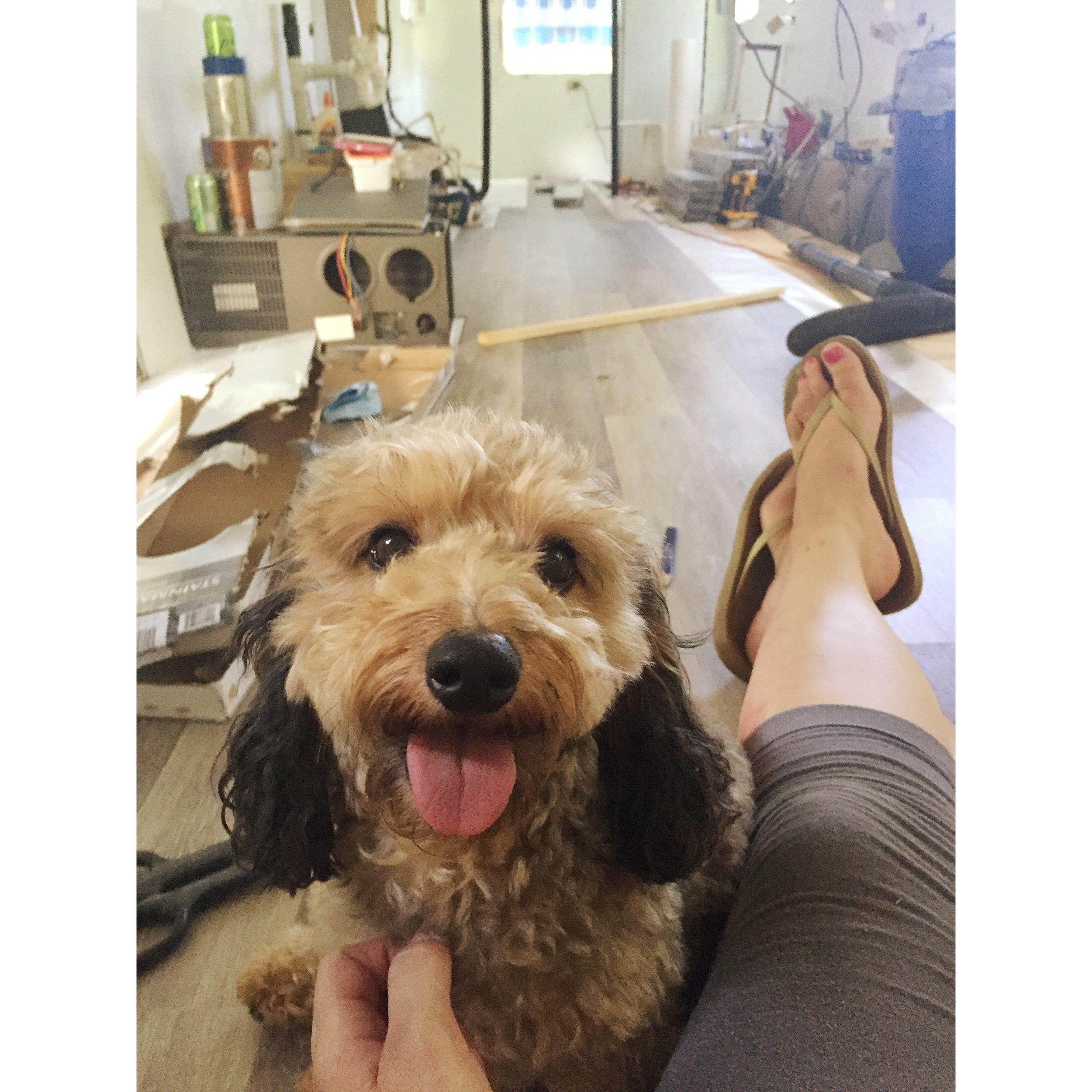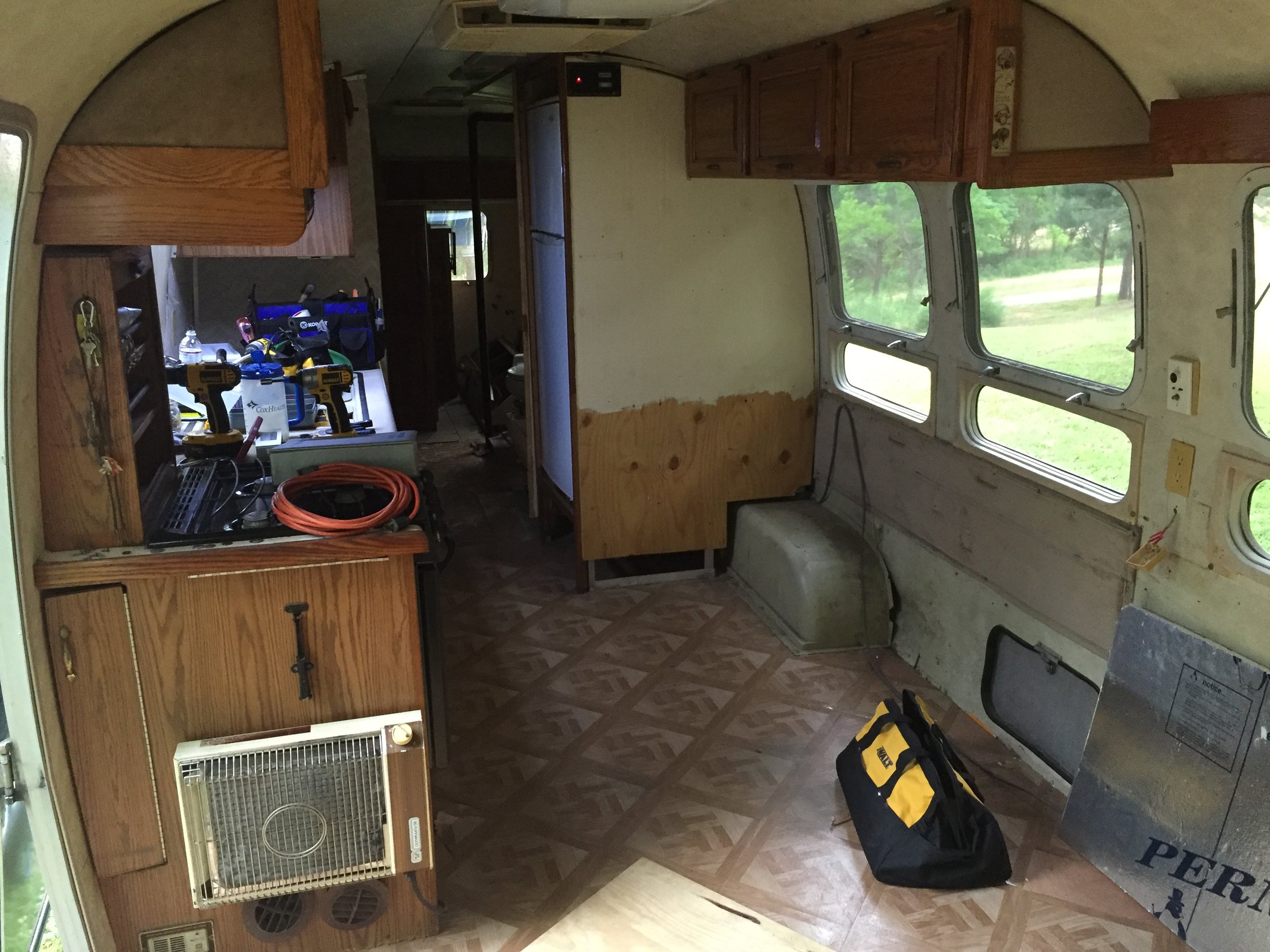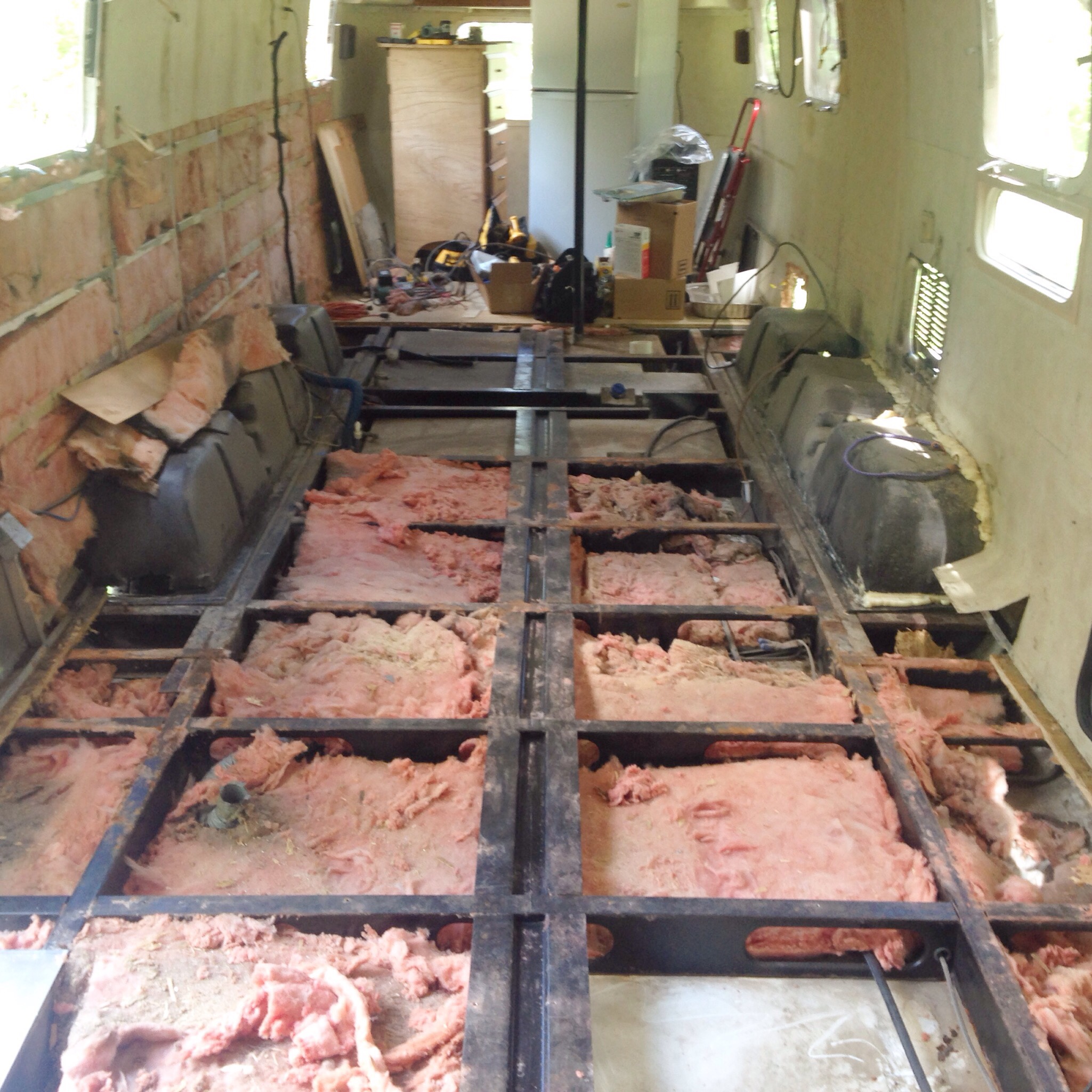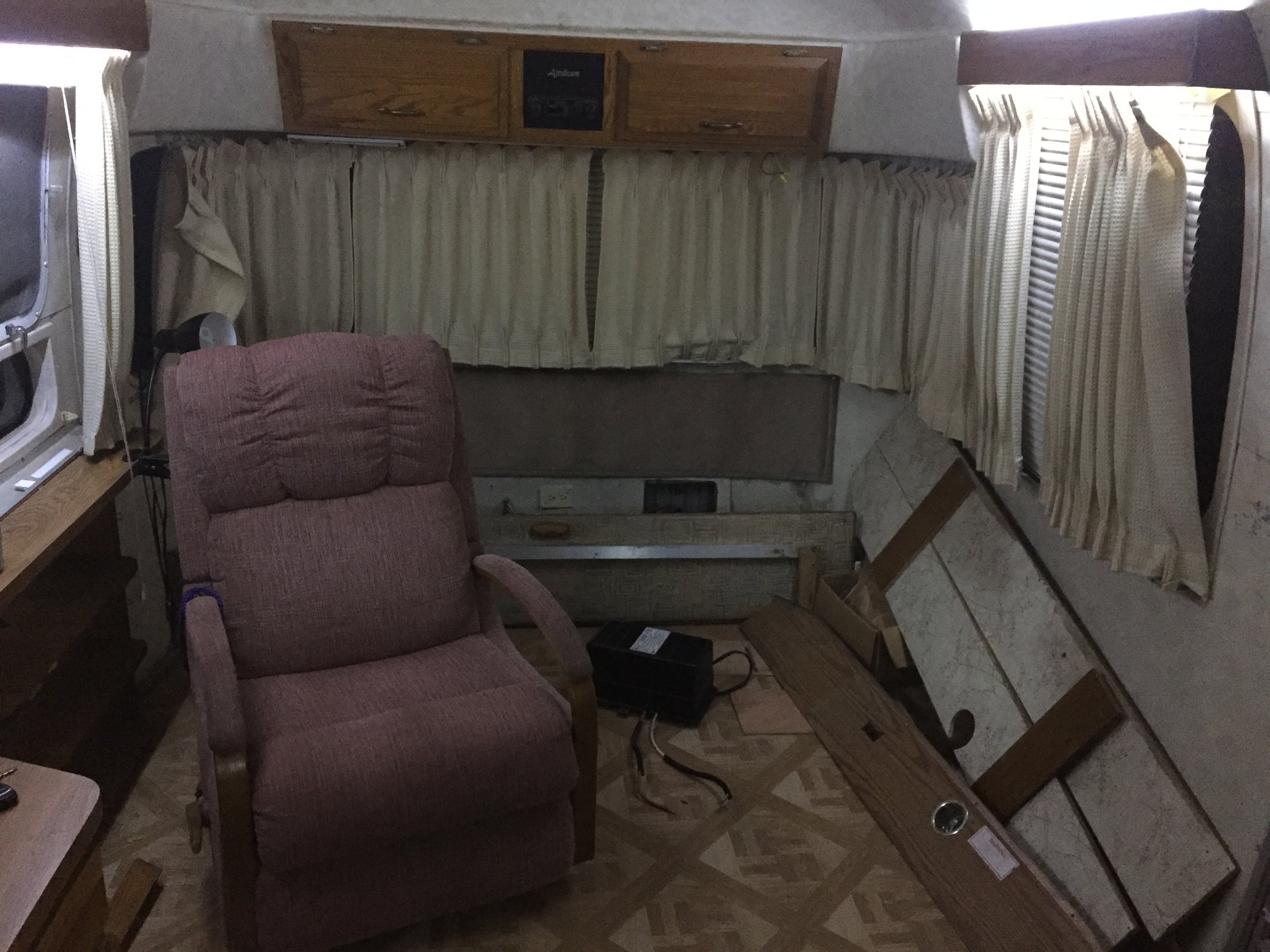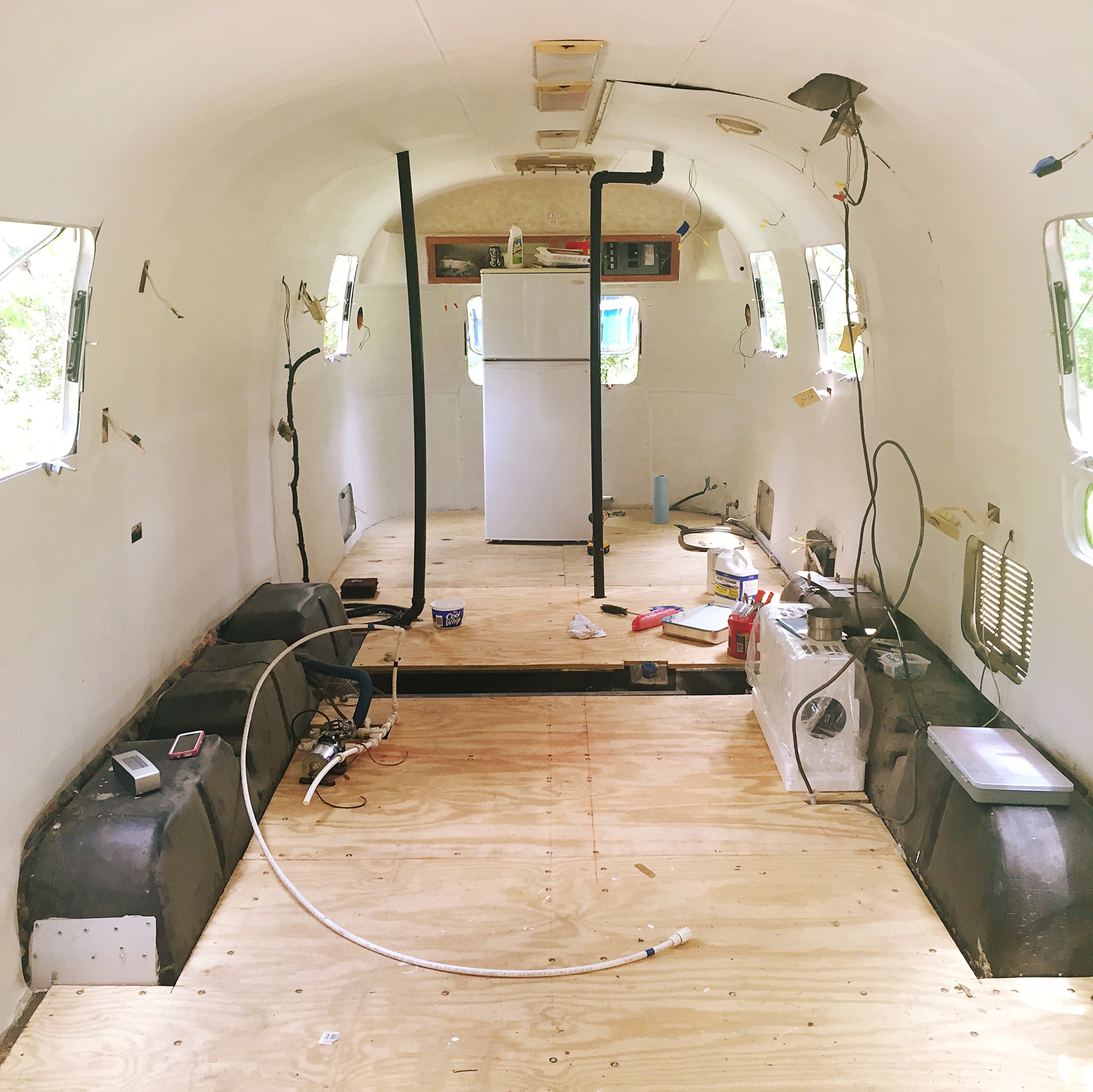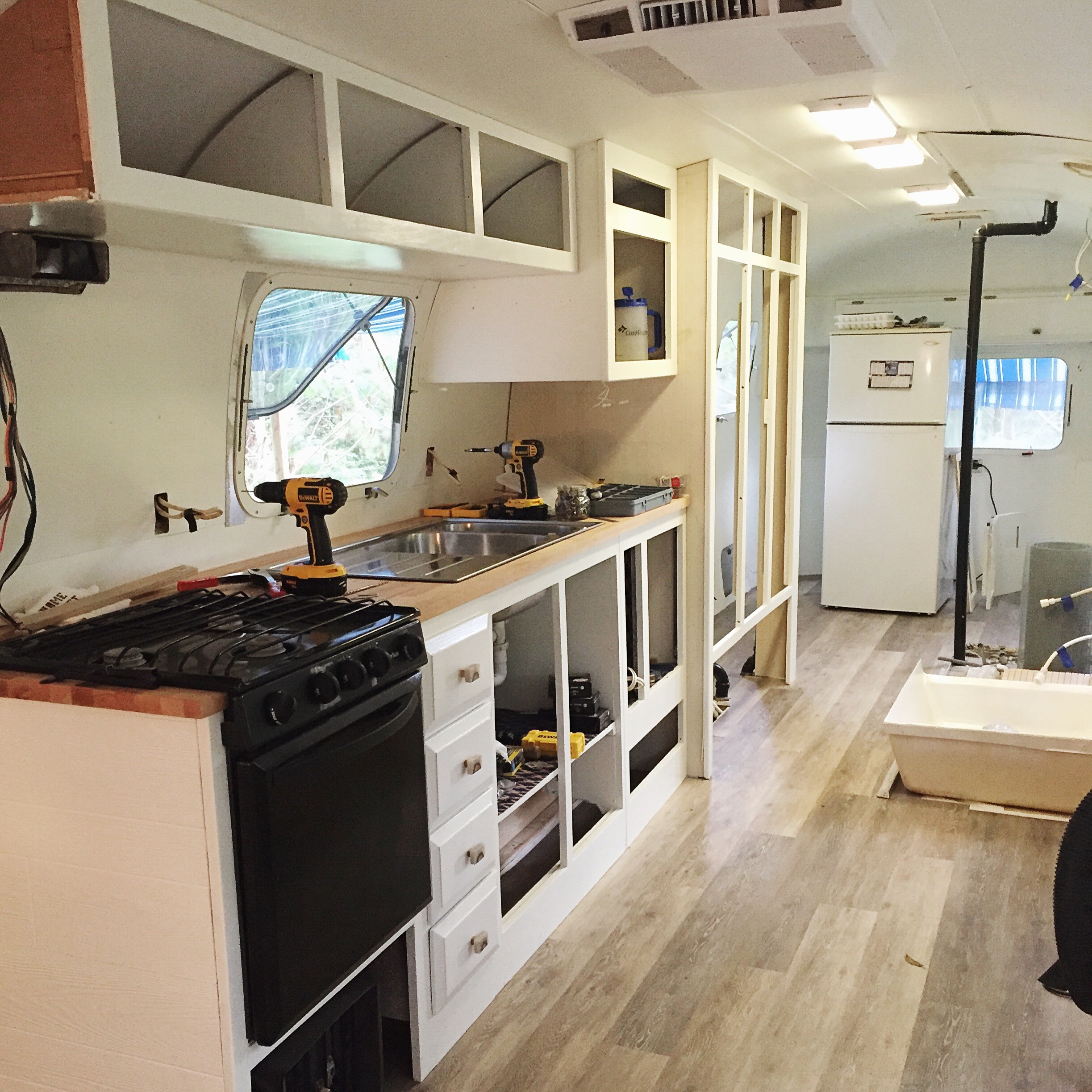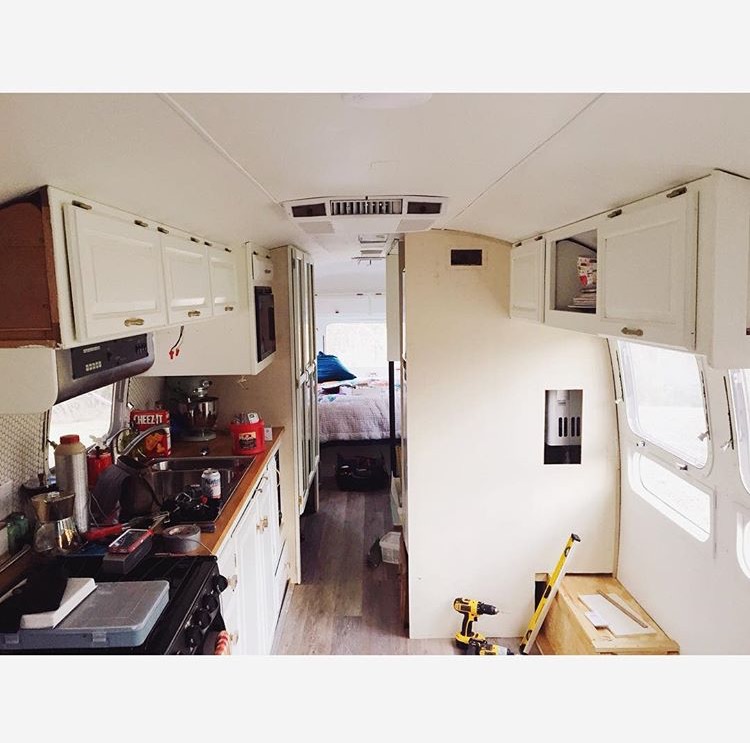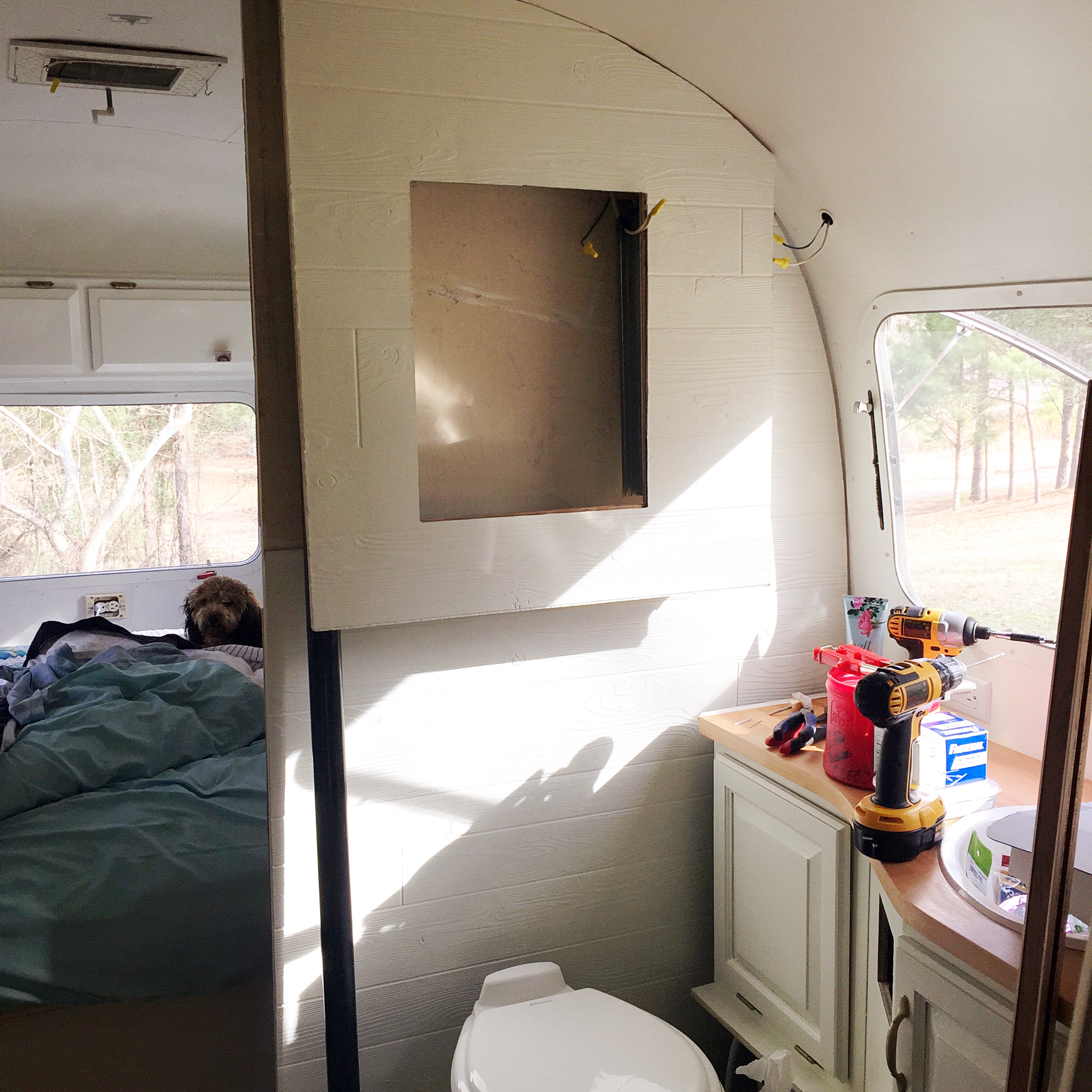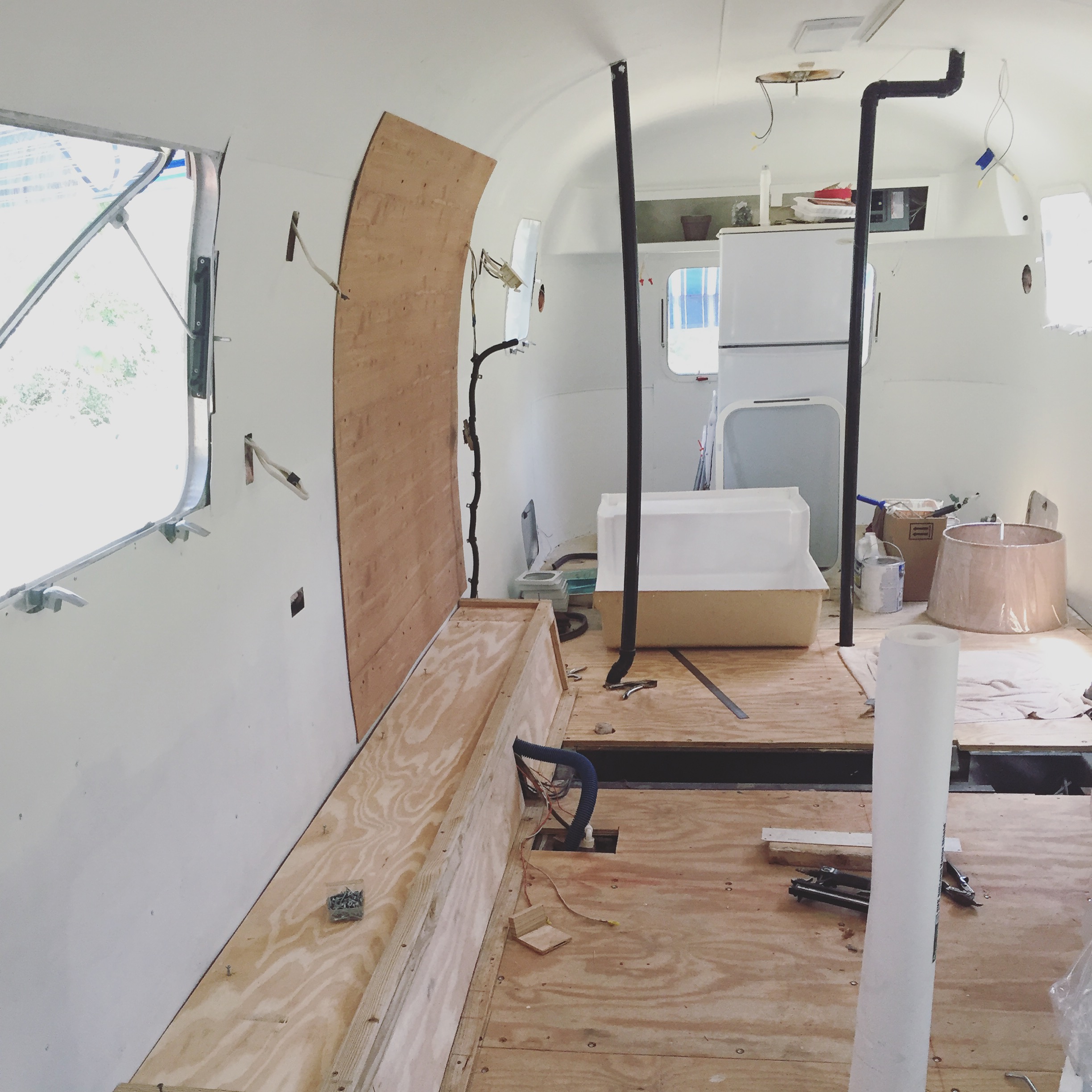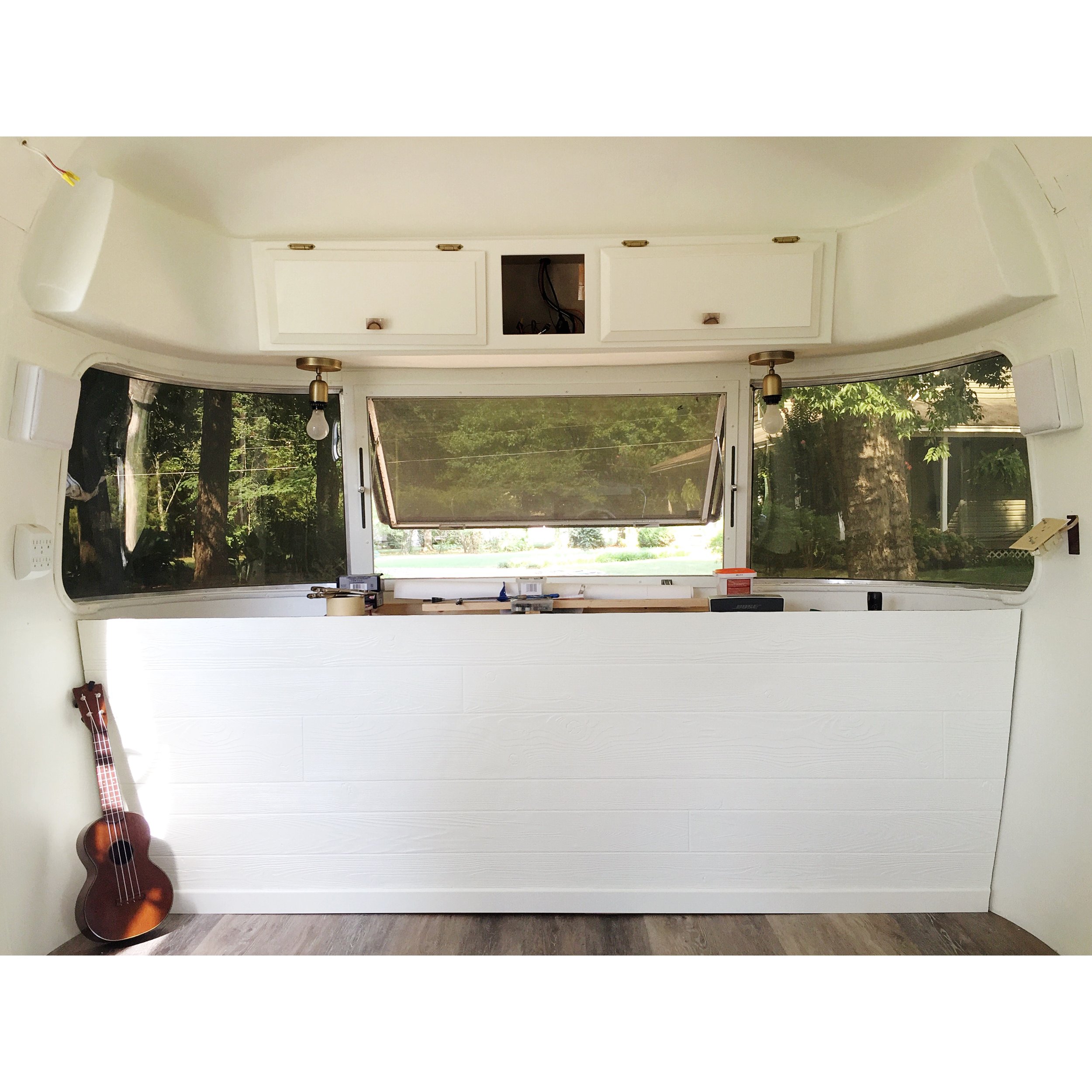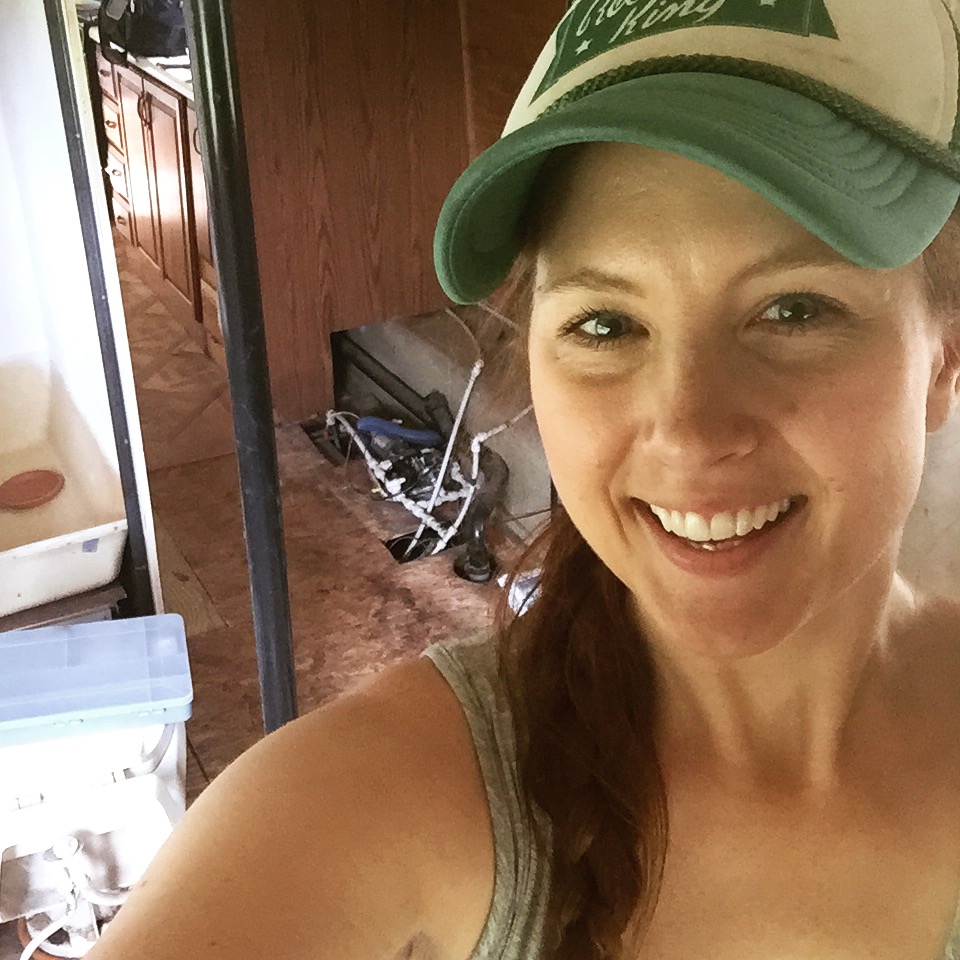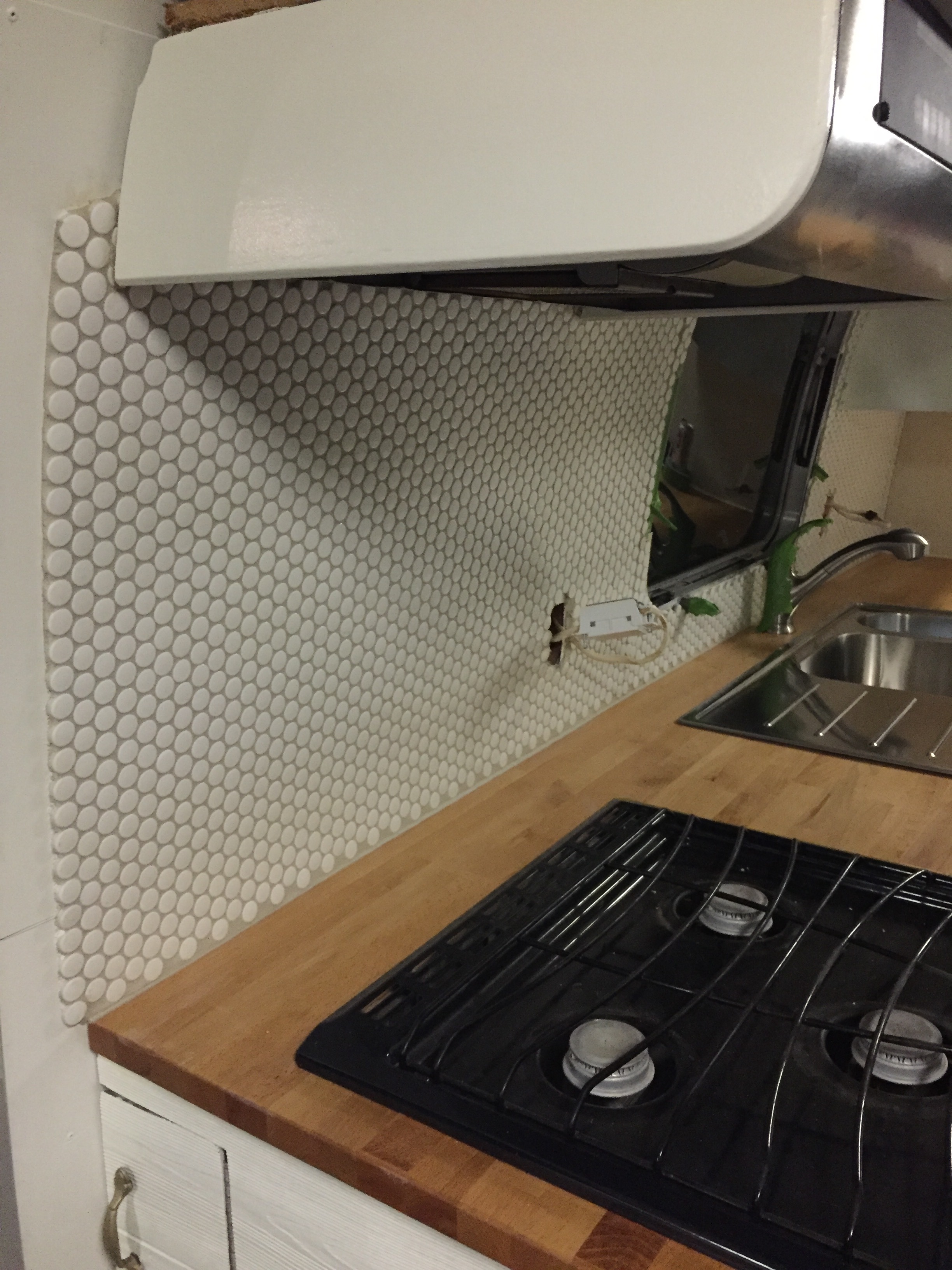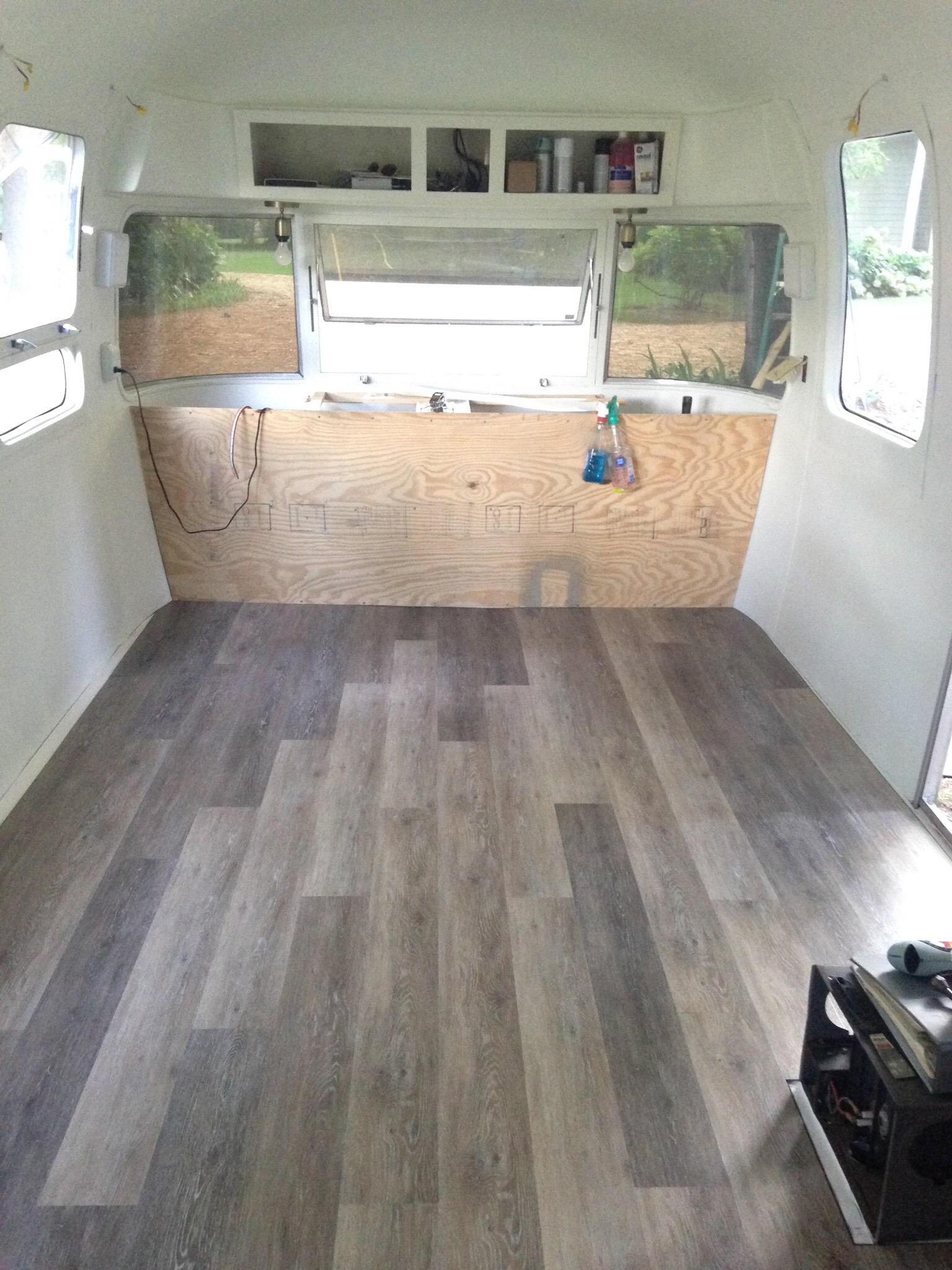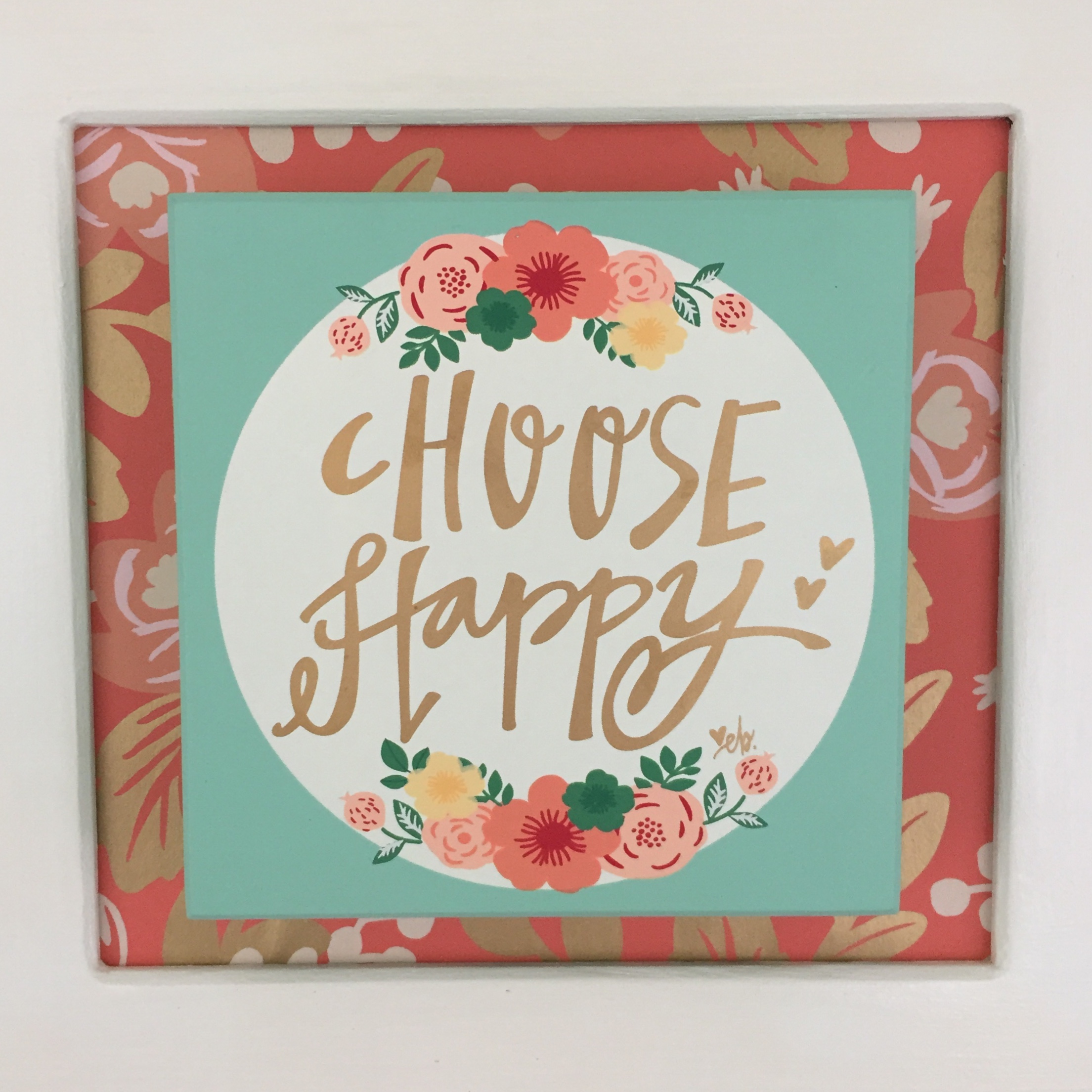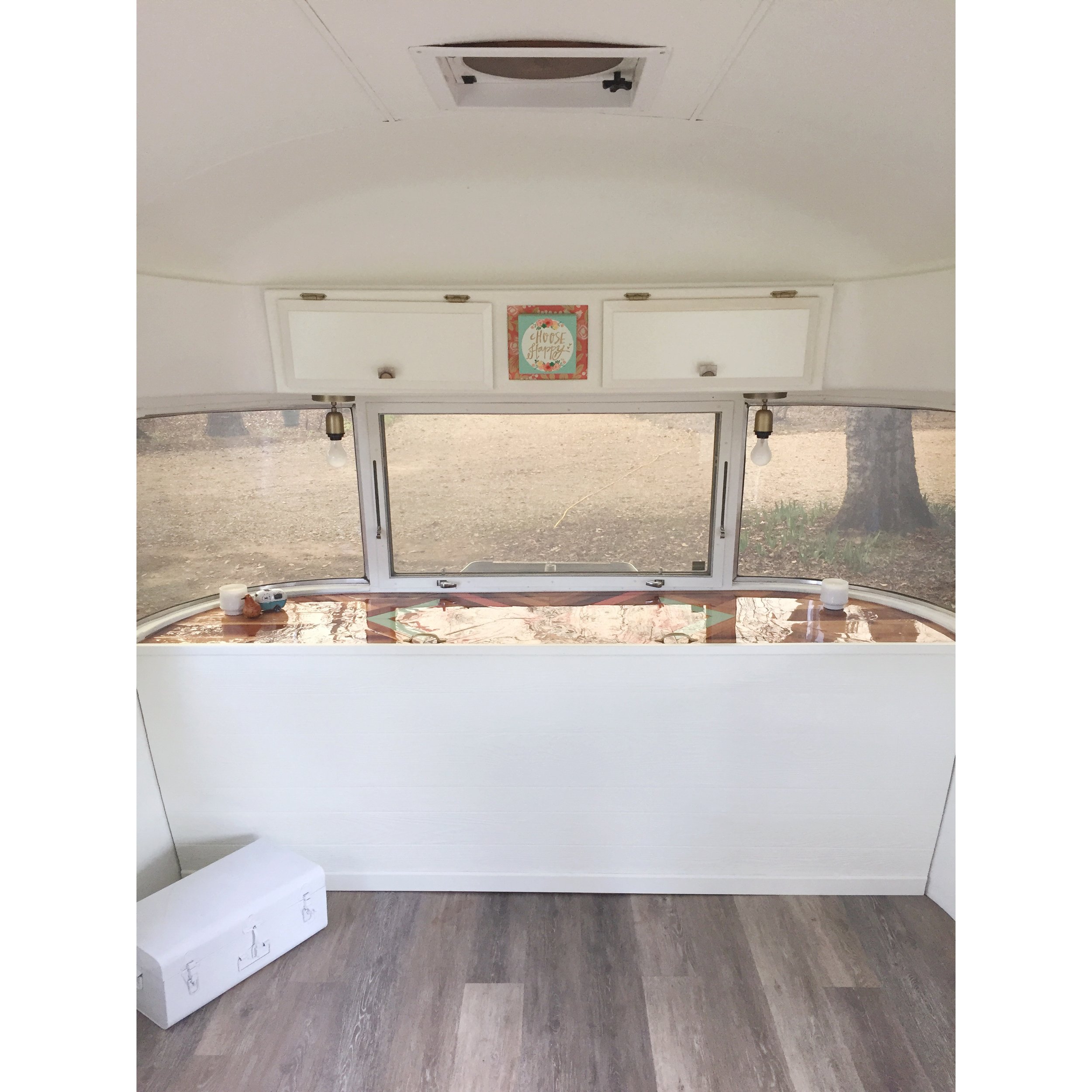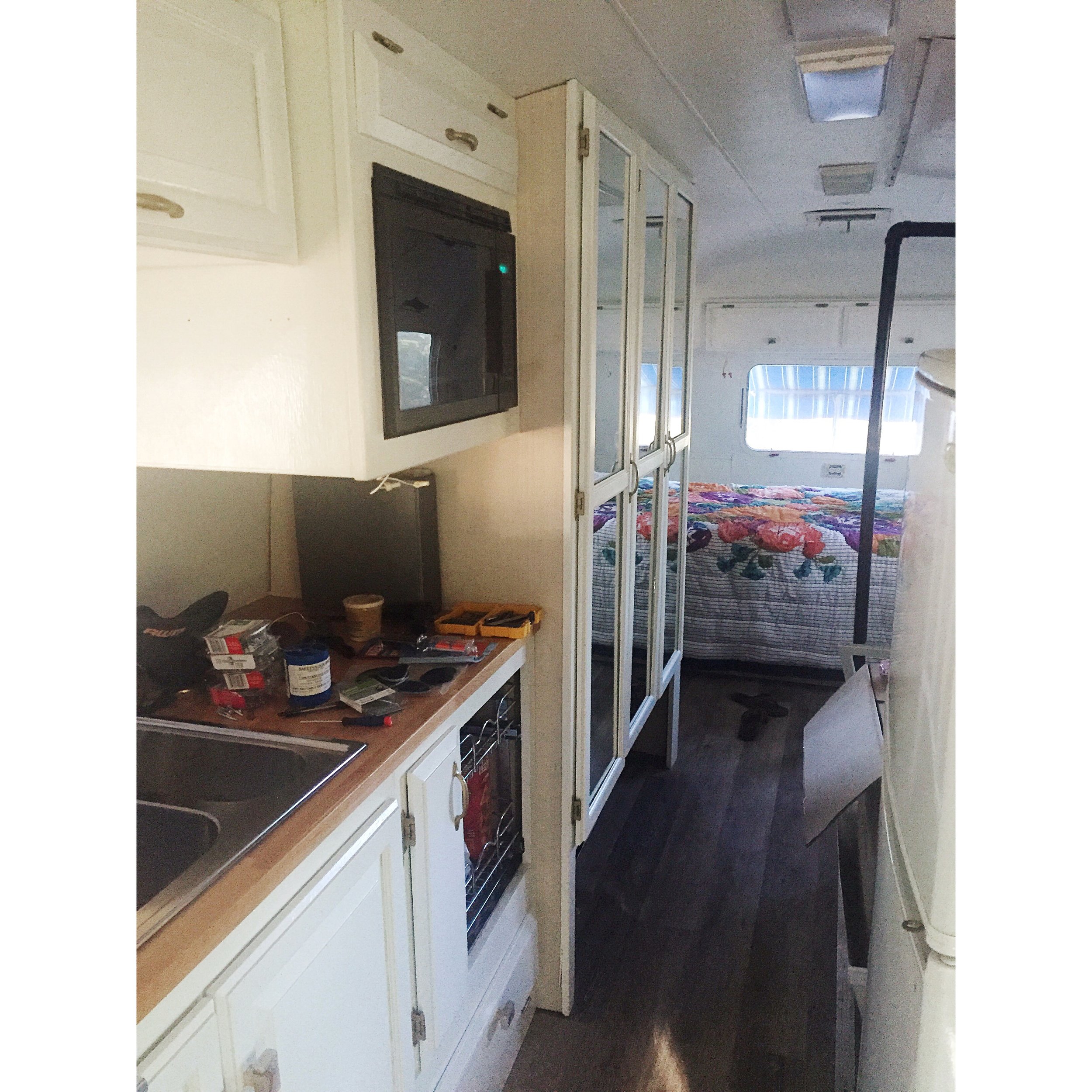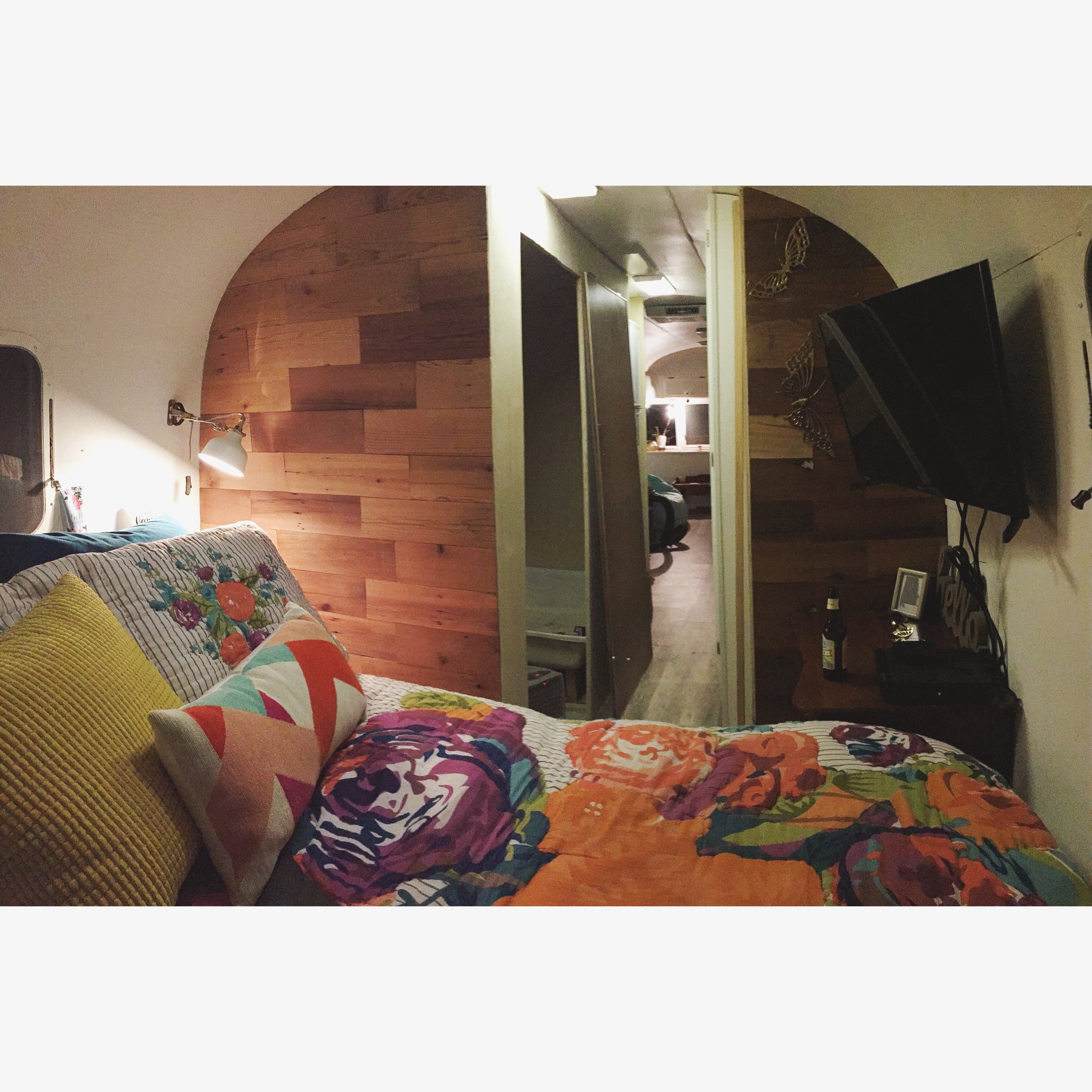I created this Google doc two weeks ago when feeling a bit stressed. I was constantly thinking about a task that needed to be completed, and this was happening all over: I'd be in the Airstream working and would see something that needed to be done and scrawl it quickly on whatever was available (a napkin, the back of an appliance manual). I'd be at the grocery store and quickly make a note in my phone, or I'd wake in the middle of the night with a task and remind myself to write it down in the morning...and then wouldn't. While we have a book (one we recommend highly), it's generally for design and build notes, as well as daily task notes, written at the start of each work day. We needed a better system - something we could both access: anytime, anywhere.
This may not look like we have much left to do, even though many of these tasks are quite time-consuming. We have really busted ass these last two weeks and I most certainly love using that little checkmark tool to signify a completed task. We check in at the end of the work day and check tasks off together, and getting organized like this, space by space, has been really beneficial to our productivity. Seeing everything in one space, broken down into bite-size chunks, does wonders. Instead of overwhelming ourselves, we can see very clearly everything that needs to be accomplished...and everything that has been accomplished.
When planning your renovation, there are many components to be addressed. It's not always easy to know where to start with Airstream renovations and it's not like any other renovation you've ever done. It's certainly not a house: hell, what house has essentially two electrical systems and two plumbing systems, each that converge into one? You're figuring out how to build to save weight and to handle the brunt of the 9.0 magnitude earthquake your trailer becomes when hauling it down the road. It's not all pretty, and it's not all fun (even when you get to the stage we're in, it's still hard work). There are million things you're considering, and how you approach and structure your renovation schedule is incredibly important.
When you first bring your Airstream project home, your first step is assessment. You'll want to walk around the trailer, both inside and out, and note every single issue you see (even if it's something as simple as wash the grime off the exterior). We find it's very helpful to draw diagrams of the trailer and label accordingly. For example: Exterior Street Side, Interior Curb Side. Once you've noted everything and begin demo, continue to draw diagrams at each stage of the progress. You'll likely find many more issues to address as you unearth the bones of your trailer. Note and mark everything.
Once your Airstream is demo'd, it's time to start planning. Establishing your floor plan, as well as your systems (electrical, plumbing, HVAC) starts here. We sketch up a floor plan to scale on graph paper and also draw the design in three-point perspective to get a good visual sense of what the elements will look like once built. We then draw diagrams of each of our systems. Seeing how all of these pieces and parts come together is essential before you begin to build. We utilize boards on Pinterest to keep track of things we want to buy and categorize these boards by system, component, or decor. We love Pinterest because we don't have to wonder what a link we saved to our bookmarks was - the visual that Pinterest gives us works an immediate trigger reminder and it's very simple to organize by category using this platform, and we can access them (just as we can Google docs) anytime, anywhere.
Inevitably, these plans, lists, and ideas will change, shift, and develop more as your build begins, but having those plans, lists, and ideas in place will make for swift(er) work. After all of our plans are set, we begin to make lists of tasks and shopping lists for each task list. It all starts with a Master List, which is overarching. We list every single task we can possibly think of/dream up for the entire renovation. Once that list is complete, we break it down into smaller lists. These are divided and sorted by the stage of renovation, type of work, and tools and supplies required. For example: frame/chassis work is labeled under 'Repairs', involves tools such as an angle grinder and welder, and generally requires that we purchase some steel. This is under the same umbrella as axle, brake, hub, shock replacement and bearing repacks. These things have to be done before the new subfloor is installed, but come after demo, and are thus not part of either of those categories.
As your renovation goes on, you'll find your lists will grow and diminish, and then grow and diminish. Having the Master List keeps you in check, it reminds you of things you may forget as the weight of your work is wearing on you and time goes on. Keep your notes, lists, receipts, and sketches in one place, if possible (they say that often the most creative are messy folk, this definitely rings true for us both, you should see our house if you dropped by unannounced), and even if you tend to be a paper and pen sort of person (like we both are) having your task list in a reachable place for all parties involved (at all times) is incredibly beneficial and serves to keep your renovation organized and moving along at a clip you're excited about: yay technology!
As you complete tasks from your smaller lists (the ones feeding into, or perhaps out of, your Master List, depending on how you look at it), be sure to check them off. Don't delete them. Create new lists as needed if the old ones overwhelm you - but those lists serve as reminders for not only your organization, but your sanity - you are making progress, even if it may not feel like it. Just check the lists, the proof is right there. Good luck and happy planning!








